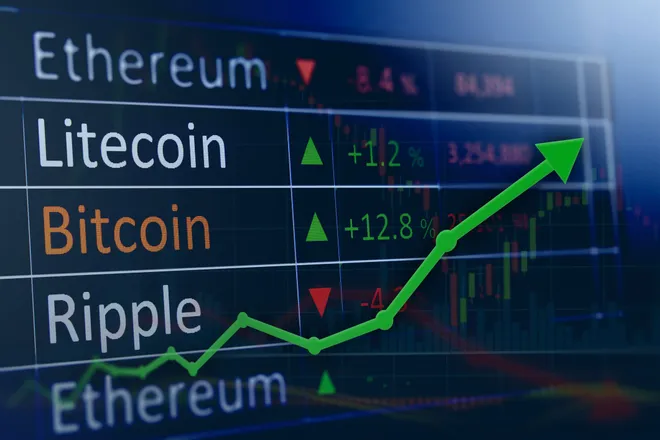Bitcoin (CRYPTO: BTC) is gaining momentum as institutional interest and favorable market conditions lay the groundwork for significant price growth. According to a recent report from Matrixport, Bitcoin is projected to reach an impressive $160,000 by 2025, driven by a combination of macroeconomic factors, increased adoption, and technological developments.
1. Increasing Demand for Bitcoin ETFs
Bitcoin exchange-traded funds (ETFs) are revolutionizing how traditional investors access the cryptocurrency market. By simplifying the investment process, ETFs have become a major catalyst for institutional adoption. Key points include:
- Simplified access: ETFs allow institutional and retail investors to include Bitcoin in their portfolios with ease.
- Substantial inflows: The growing popularity of ETFs has driven significant capital into Bitcoin markets.
- Legitimacy for Bitcoin: Analysts from Matrixport highlight that Bitcoin is now viewed as a mainstream asset in diversified institutional strategies.
As institutional investors embrace Bitcoin ETFs, the asset’s growing credibility underscores its evolving role in financial ecosystems.
2. Expansion of Global Liquidity
A supportive macroeconomic environment marked by expanding global liquidity is further accelerating Bitcoin’s growth trajectory. This includes:
- Broader adoption: Increasing usage of Bitcoin as a recognized financial instrument enhances its credibility.
- Lower volatility: Bitcoin’s maturing market dynamics lead to reduced price fluctuations, attracting long-term investors.
Global liquidity growth offers a fertile ground for Bitcoin to flourish, solidifying its position as a store of value and hedge against inflation.
3. Favorable Macroeconomic Environment
Rising inflationary pressures and evolving central bank policies have reshaped investor sentiment, creating a favorable landscape for Bitcoin. Specific drivers include:
- Hedge against inflation: Bitcoin is increasingly recognized as an effective inflation-resistant asset.
- Store of value: Its limited supply reinforces its role as a digital alternative to traditional safe-haven assets like gold.
- Institutional interest: Retail and institutional investors alike are turning to Bitcoin for portfolio diversification and long-term value preservation.
These macroeconomic shifts have firmly positioned Bitcoin as a core component of modern investment strategies.
Adoption Rates Near Critical Mass
Bitcoin’s global adoption rate is approaching a pivotal 8% threshold, a benchmark historically linked to rapid growth for emerging technologies. Factors fueling adoption include:
- Growing user base: As Bitcoin integrates into financial systems, its appeal broadens among global demographics.
- Maturation as an asset: With greater utility and accessibility, Bitcoin continues to evolve into a robust asset class.
What’s Next for Bitcoin?
Bitcoin’s journey to $160,000 by 2025 is contingent on:
- Sustained demand for ETFs: The widespread use of Bitcoin ETFs could attract trillions of dollars in institutional investments.
- Global liquidity growth: Increased liquidity provides a stable market foundation for Bitcoin’s ascent.
- Favorable macroeconomic conditions: Bitcoin’s reputation as an inflation hedge and store of value remains vital to its success.
Institutional confidence and continued innovation will shape Bitcoin’s role as a mainstream financial asset. For investors, the next two years could present unprecedented opportunities to harness Bitcoin’s potential.
Disclaimer: This article is for informational purposes only and not financial advice. Always conduct your research before making investment decisions.




